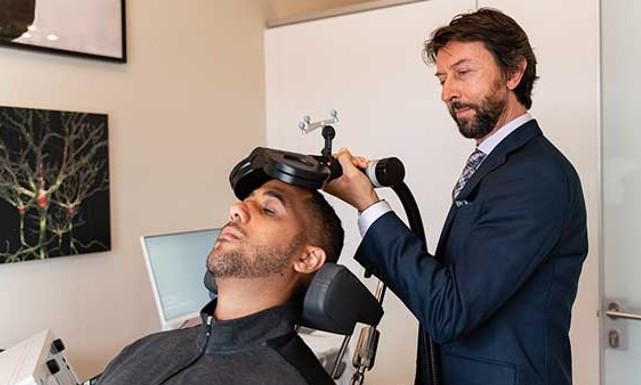Healthcare experts believe the loosened federal regulations for prescribing buprenorphine will improve opioid use disorder outcomes
By Jason Langendorf
May 3, 2021With the Biden administration’s announcement that it will pursue dramatic deregulation of medication-assisted treatment (MAT), America just gained hundreds of thousands of potential recruits in its long-running battle against opioids.
Last week the Department of Health and Human Services (HHS) issued new guidelines allowing all eligible clinicians—including physicians, physician assistants, nurse practitioners, clinical nurse specialists, certified registered nurse anesthetists and certified nurse midwives—to administer buprenorphine without having to satisfy certain previous requirements related to training, counseling and ancillary services. The removal of this so-called “X-waiver” will permit almost any prescriber to treat patients who have opioid use disorder (OUD).
“Removing barriers to quality treatment is a top policy priority for the Biden-Harris administration,” Regina LaBelle, acting director of the Office of National Drug Control Policy, said in a statement. “Addiction treatment should be a routine part of healthcare, and this new guideline will make access to quality treatment for opioid use disorder more accessible. The guideline is another important step forward in our efforts to bend the curve of the overdose and addiction epidemic.”
Why Now?
MAT deregulation has faced opposition over the years, but addiction experts have lately been joined by policymakers and the public in efforts to loosen restrictions on buprenorphine, a safe and effective medication that is considered the gold standard in OUD treatment and a critical tool in reversing the nation’s rising overdose rates.
Treatment with buprenorphine allows patients with opioid use disorder to lead satisfying, productive lives. The [new] policy … is a critically important step in making that happen.”—statement from the American Medical Association
The opioid epidemic, amplified by the isolation and logistical barriers brought on by the COVID-19 pandemic, has exploded. According to provisional data from the Centers for Disease Control and Prevention (CDC), there were more than 87,000 reported overdose deaths in the 12-month period ending in September 2020—the highest one-year total in the U.S. on record.
The new deregulation efforts come on the heels of a similar proposal from the Trump administration in January, which was nixed by the Biden team. Current administration officials have implied that the Trump proposal might have been met with legal delays; the new guidelines theoretically expedite the deregulation process.
What the New MAT Guidelines Mean
Under the new HHS guidelines, eligible clinicians who are licensed under state law and possess a valid Drug Enforcement Administration (DEA) registration are automatically allowed to administer buprenorphine to up to 30 patients at a time. Additionally, the Biden administration’s proposal goes further than Trump’s, giving more prescribers the latitude to administer buprenorphine.
Providers still must submit a notice of intent to the Substance Abuse and Mental Health Services Administration (SAMHSA) if they want to prescribe buprenorphine, but they will no longer be required to undergo special training or apply for the X-waiver. Deregulation advocates have long pointed to the pressing need for more providers, and for the destigmatization of OUD treatment and normalization of MAT.
If I see a patient and they want to get started on buprenorphine, they’ve already gone through a lot of processing to make that behavior change. Any barrier can be very disruptive, especially when initiating treatment because they’re at high risk to return to use.”—Ximena A. Levander, Oregon Health & Science University School of Medicine
According to a recent estimate from HHS, only 66,000 of the country’s roughly one million physicians and 25,000 of its non-physician prescribers (such as nurse practitioners or physician’s assistants) possessed the X-waiver to prescribe buprenorphine.
When the new guidelines were announced, the American Medical Association (AMA) quickly released a statement voicing its support: “Treatment with buprenorphine allows patients with opioid use disorder to lead satisfying, productive lives. The policy announced today is a critically important step in making that happen. Going forward, the AMA is supporting legislation to remove the waiver requirements altogether and will advocate for that in Congress.”
Why the New MAT Guidelines Matter
Correcting the odd pretense of previous regulations, which made the drugs that are driving the opioid crisis far more accessible than the medication proven most effective in reducing the epidemic’s ill effects, was essential. That incongruity played a central role in perpetuating the stigma around MAT.

As part of a recent study published in the journal Drug and Alcohol Dependence, researchers surveyed nearly 1,000 pharmacies. They found that about 75% were able to dispense buprenorphine, yet around 20% of those would not dispense the drug. The implication is that longstanding social biases continue to create barriers to accessing the medication.
“If I see a patient and they want to get started on buprenorphine, they’ve already gone through a lot of processing to make that behavior change,” Ximena A. Levander, M.D., a co-author of the study and a clinical instructor at the Oregon Health & Science University School of Medicine, said in a news release. “Any barrier can be very disruptive, especially when initiating treatment because they’re at high risk to return to use.”
The removal of access barriers has been successful in other countries. In France, for example, all registered medical doctors have been allowed to prescribe buprenorphine without specialized education or licensing requirements since 1995. According to a 2010 study in The American Journal on Addictions, there was a 79% decline in overdose deaths in France in the years following that deregulation.
In the United States, meanwhile, the old buprenorphine guidelines never squared with the drug’s classification as a Schedule III controlled substance (grouped with substances such as Tylenol with codeine). The risk for diversion isn’t nil, but the reality is that people don’t often seek out buprenorphine without a physician’s prescription—and when they did under the previous guidelines, it was usually because access to the medication was so restrictive.
“Recent research shows that buprenorphine diversion occurred for reasons related to therapeutic use,” says Lawrence Weinstein, M.D., chief medical officer at Addiction Centers of America. “Withdrawal prevention, to maintain abstinence, and to self-wean off substances were the most common reasons for using the drug illicitly, and the vast majority of these individuals would prefer using prescribed buprenorphine if it was available to them.”
Top photo: Silvan Arnet














